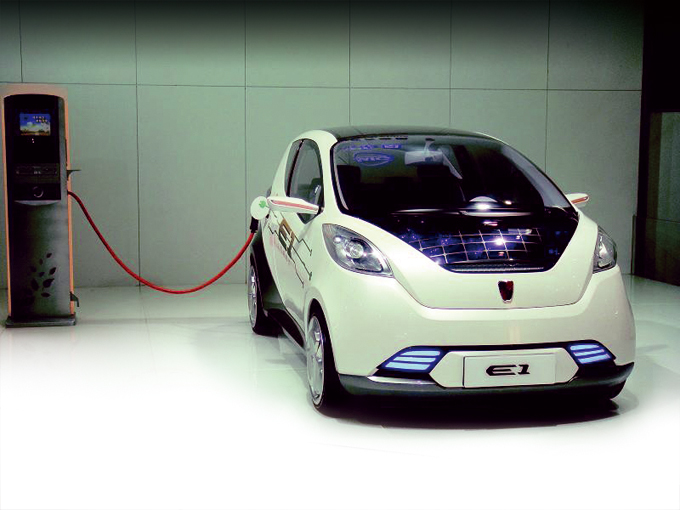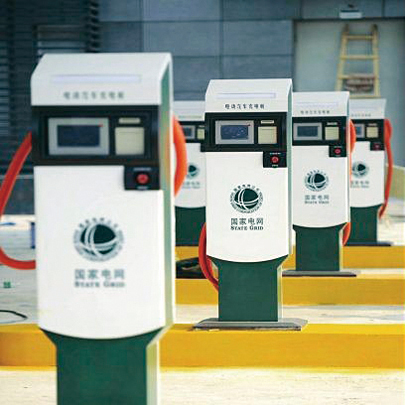Electric Vehicle Industry Development In China
2013/04/08 | By CENSWith fossil fuel costing ever more and exploration becoming increasingly difficult, electric vehicle (EV) will likely become more popular, especially with zero emission, low noise, and improving overall performance due to the technology advancement in electric powertrain systems and battery.
EVs include pure electric vehicle, or battery electric vehicle (BEV), hybrid electric vehicle (HEV), and fuel-cell EV (FCEV).

Under joint efforts of the government, enterprises, research institutes and makers, the EV industry in China has been rapidly developing in recent years. Increasing numbers of electric passenger cars, public buses are operating in major cities throughout China, while different vehicle makers and research institutes have been achieving more success in advancement in EV powertrain systems, battery, new operation business models, certification standards etc.
R&D
Major EV-related development projects sponsored by the government in China kicked off in 2001, after strong support from science and technology development plans in the past two five-year economic development plans, as well as the major application platforms such as the Beijing Olympics, World Expo, and the "10-city, 1,000-EV" program, the EV industry in China has emerged from almost nothing to now, a continued-advancement status.
Generally, China has built up its own EV supply chain and needed intellectual property (IP) assets, plus that the government has been aggressively pushing technological advancement and adoption of EVs in major cities.
As of the end of June 2012, 83 Chinese enterprises had pushed 454 energy-saving and new-energy vehicle models into the market; while as of the end of March 2012, 25 cities in China together have adopted some 19,000 energy-saving and new-energy vehicles (including 16,800 units for public services). A total of 170 EV charging stations (with more than 6,400 charging posts installed) have been set up in cities, and these EVs together transport a total of about 9 billion person/time.
The new "Pure Electric Passenger Vehicle Technical Requirements" was put into effective in July 2012 in China, which is expected to further regulate the development and production of EVs in the nation, and help to promote a healthier future development of the rising industry.
The explosive growth in China's automotive industry has won global attention especially in the past 10 years. Al though in traditional internal combustion engine (ICE) fields, China lags many industrially advanced nations, it has been aggressively trying to catch up with leaders in the EV sector.
In China, some major enterprises have achieved important breakthroughs in battery technology, enabling mass production of EV power cells, thus suggesting China may have a chance to pull ahead of other nations in developing the EV industry.

Challenges
Some major concerns still hamper the higher popularity of EVs, including manufacturing costs, operation costs, technical reliability and maturity etc.
Battery costs still prevent higher EV sales and burden operational costs; while current technologies still prevent EV power cells from being smaller and less-expensive to attract more consumers. So the Chinese government is providing more incentives and subsidies to early adopters.
Urgent problems ahead have to be solved first, including China's core EV technologies still lacking international competitiveness, inadequate investment by enough devotion by enterprises, relatively-weak government coordination in industry development etc.
Compared to other industrially advanced nations, China's EV industry development started early enough with sufficiently fast development. However, the weak infrastructure of China's traditional automotive industry is a disadvantage.
Industry sources say that to effectively drive the EV industry in China, government and private makers have to jointly control key technologies, cultivate new-energy vehicle and related tactical segments, and map out clear tactical strategies etc.
Development Focal Points
According to the 2012 China's Automotive Industry Development Report, or the so-called "2012 China automotive industry bluebook" jointly written and edited by Development Research Centre of the State Council, Society of Automotive engineers of China (SAE-China) and Volkswagen Group China, China's EV-industry development strategies are getting increasingly clear, but the nations still lags in some key technologies.
Feng Fei, Department Director of the Industrial Economy in Development Research Center of the State Council, said in the bluebook: "The next 10 years will the key period in China's EV industry development. The government and private sector must pay closer attention to the EV industry, and simultaneously develop hybrid powertrain technologies. The EV industry should set up a division-of-labor scheme as soon as possible as the next step, and should also encourage innovation and develop multiple EV application market for faster future development.
In the Chinese government's 12th Five-year Economic Development Plan, the nation aims to totally control key technologies in the EV industry, cultivate homegrown R&D capability, leverage its big market and resources to form a comprehensive and competitive assembled-EV and key-parts infrastructure in China. On the other hand, the Chinese government has been aggressively constructing the EV charging and hydrogen-fuel filling infrastructure to match the EV industry development requirements.
For the 12th Five-year Plan, the Chinese central government has mapped out seven key targets for developing the EV industry.
The first is the "three vertical, three horizontal R&D deployment, including FCEV, HEV and BEV as the "three vertical"; while multiple-energy powertrain control system, electrical-machinery drive and control system, and power cells/battery management system as the "three horizontal" R&D targets.
The second target is to further expand the nation's charging infrastructure-related technology and innovation capability to accelerate the deployment of overall charging infrastructure in China.
The third target is to accelerate the research on EV-related technical standards, which are vital for future industrial development.
Fourth is to deepen the EV promotion plans nationwide, and explore more feasible business models for EV operation.

The fifth is to support the industry to set up different technology innovation alliances, which handles various science and technology development plans.
The sixth is to set up a more comprehensive platform for recruiting and cultivating personnel.
The seventh is to conduct more international technical exchanges and internationalize the EV industry in China.




